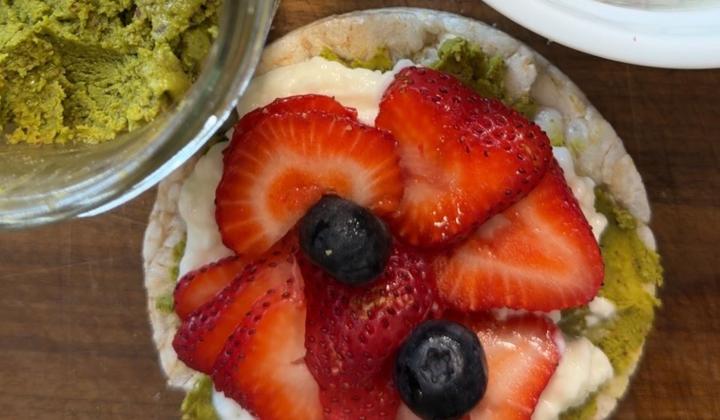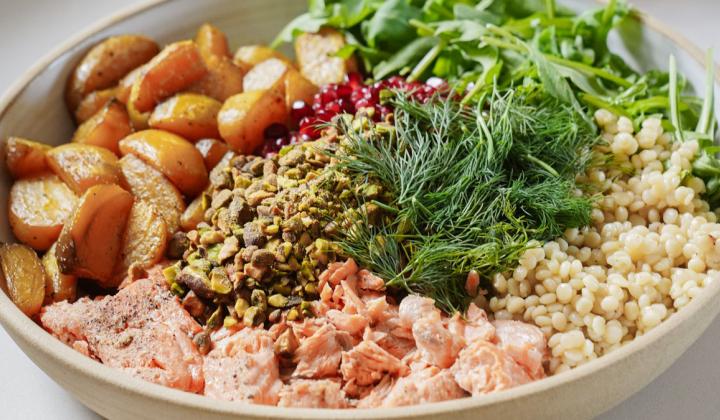Pistachio English Tea Scones

Yield
Ingredients
|
Batter |
g/ml |
lbs./oz |
Baker's % |
Yield % |
Notes |
|
Butter, unsalted |
2500 g |
5 lbs 8 oz |
25.00 % |
10.73 % |
|
|
Sugar, granulated |
2500 g |
5 lbs 8 oz |
25.00 % |
10.73 % |
|
|
Eggs |
1500 ml |
3 lbs 6 oz |
15.00 % |
6.44 % |
|
|
Salt |
20 g |
1 tbsp |
0.20 % |
0.09 % |
|
|
Lemon extract |
20 ml |
4 tsp |
0.20 % |
0.09 % |
|
|
Vanilla extract |
20 ml |
4 tsp |
0.20 % |
0.09 % |
|
|
Flour, cake |
2500 g |
5 lbs 8 oz |
25.00 % |
10.73 % |
|
|
Flour, pastry |
5000 g |
11 lbs |
50.00 % |
21.45 % |
|
|
Flour, bread |
2500 g |
5 lbs 8 oz |
25.00 % |
10.73 % |
|
|
Baking powder |
750 g |
1 lbs 10 oz |
7.50 % |
3.22 % |
|
|
Milk, whole |
4000 ml |
9 lbs 1 oz |
40.00 % |
17.16 % |
|
|
American Pistachios |
2000 g |
4 lbs 7 oz |
20.00 % |
8.58 % |
roasted, chopped |
|
Total |
23310 g |
51 lbs 10 oz |
233.10 % |
100.00% |
Instructions
Cream the butter and sugar in a mixer with a paddle attachment. Add the eggs one at a time. Both butter and eggs should be at room temperature. Add the spices. Sift the flour with the leavening agent and alternatively add with the liquid. Add the American Pistachios. Do not over mix. Place on a well-floured work surface and roll into 1.3 cm (½ inch) thickness. Cut with a cookie cutter and place on a sheet pan lined with parchment paper. Apply egg wash and relax the dough 15 minutes before baking. Bake at 190°C (375° F) for 8-10 minutes or until done.
Notes
Scones are a favorite of immigrants from all over the British Island. Scottish (biscuit-like) teacakes, cooked on a griddle or oven baked. The word scone is pronounced in the soft Scottish accent like scaun. The name originally came from a perish in Perthshire which was the site of the historic abbey and palace where the kings of Scotland were crowned on the Stone of Destiny or Scone.
Scones originated in Scotland, but the name is probably derived from an old Dutch word, schoonbroot, which means "fine white bread". An old Icelandic term for biscuits, skonrok, comes from the same source. The first known reference to scones in English occurs in a (Scottish) translation of the Aenid, dating from1513. Formerly, scones were rather large, flat cakes that were cut into four so the scones were usually square or triangular.
Sour milk produces a scone with a light texture and makes an impressive alternative to sour cream. To make sour milk, simply stir in 25 ml lemon juice or vinegar into 400 ml milk.
If cookie cutters are not available or if a different shape is preferred, the scone can be cut out with a knife. Flour the knife; cut the dough iinto5 cm wide strips. Then cut the strips diagonally to form diamond shapes or triangles.
Served with tea, preserves and whipped cream.
Nutritional Information per Serving: 445 calories, 10 g protein, 19 g fat, 8 g saturated fat, 62 g carbohydrates, 16 g sugars, 5 g fiber, 58 mg cholesterol, 507 mg sodium.

American Pistachio Growers











